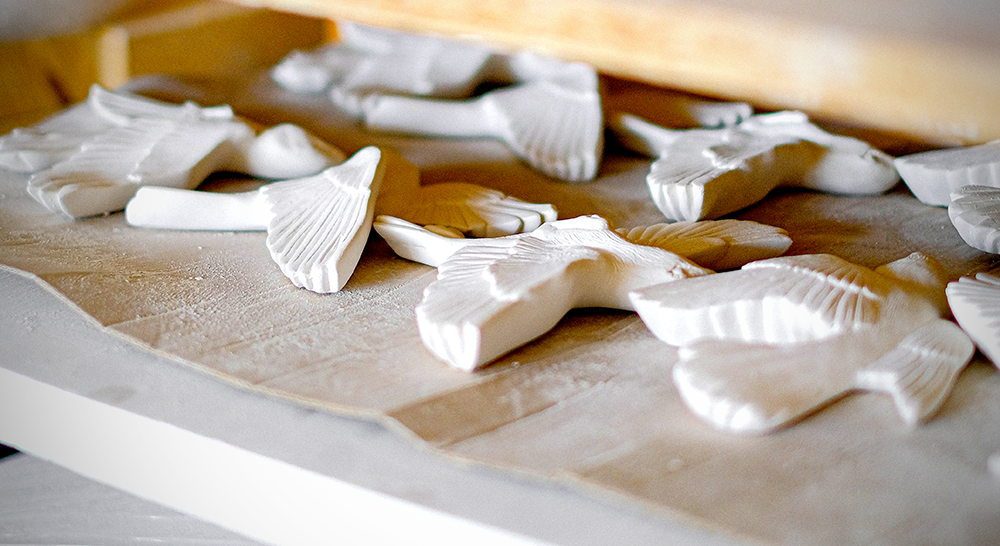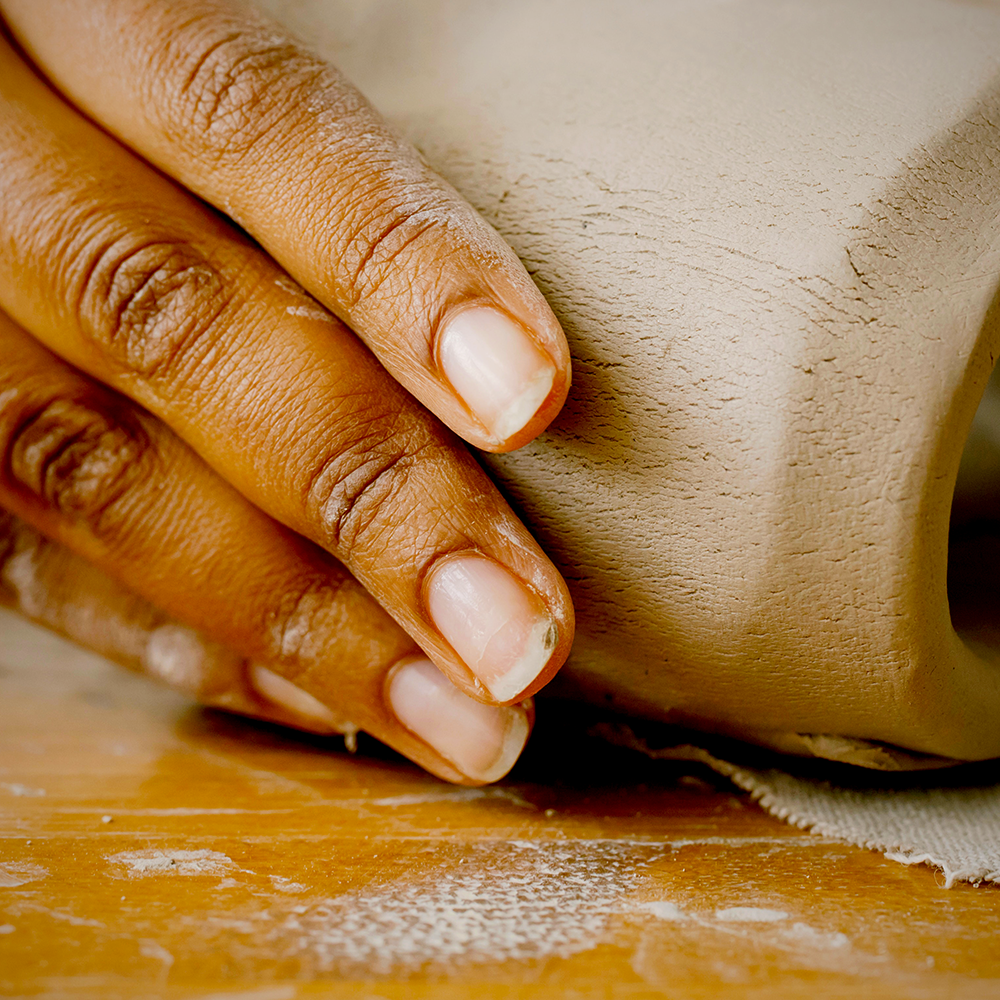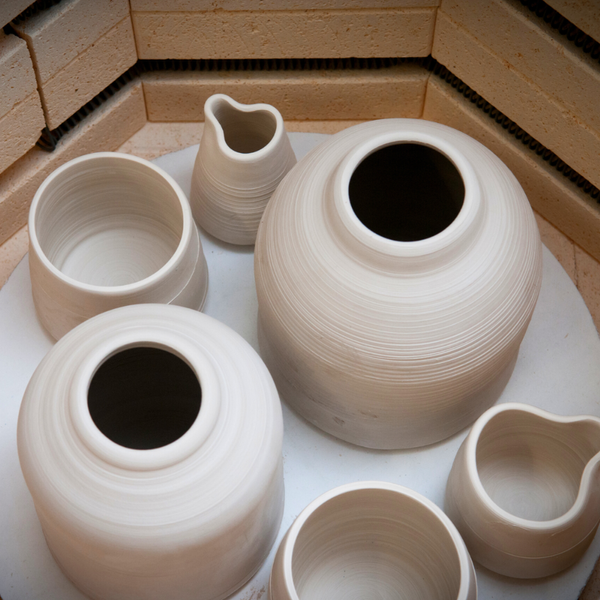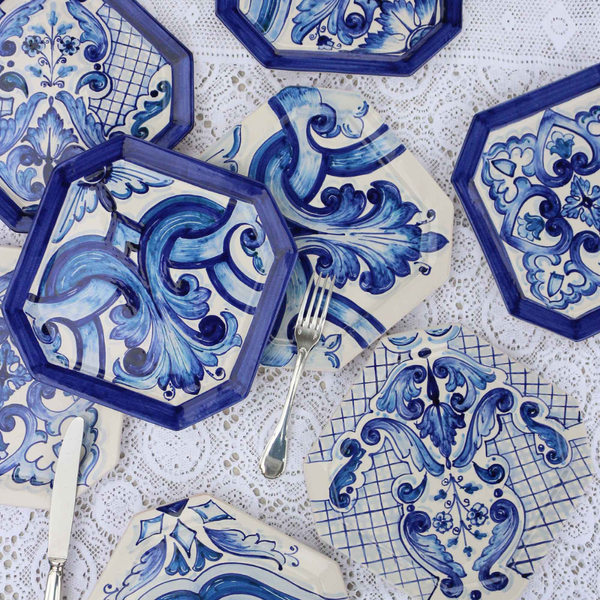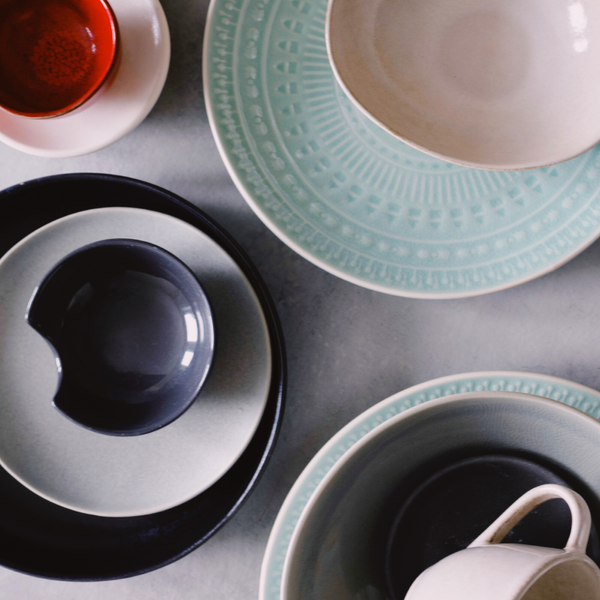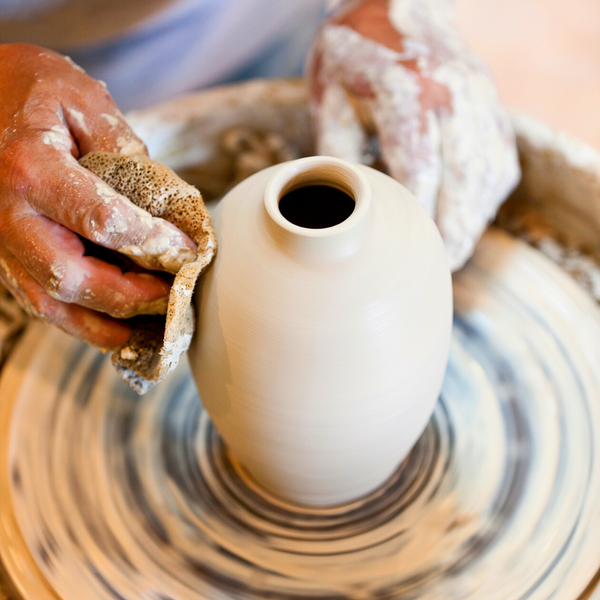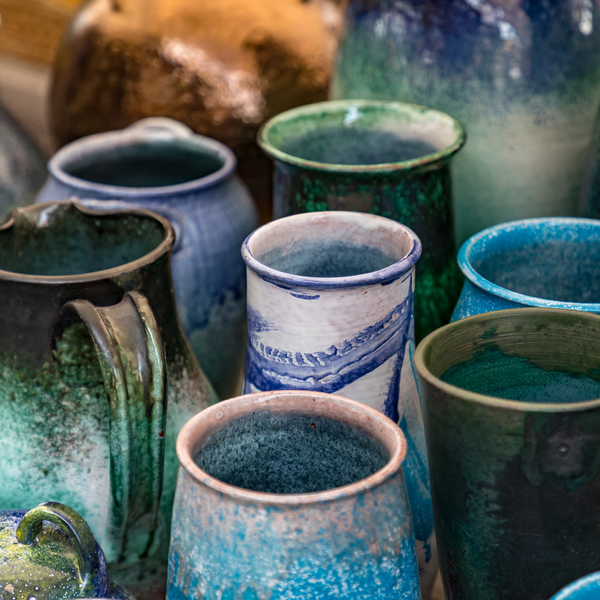Welcome, clay lovers!
If you've ever glanced longingly at beautifully sculpted ceramic pieces and wondered how the creator brought their vision to life, you've come to the right place.
While throwing pottery on the wheel gets a lot of attention, handbuilding is a versatile and accessible way to create three-dimensional works of art.
In today's post, we'll break down the three fundamental handbuilding techniques - coils, slabs, and pinch pots - that many potters rely on to start building their shapes without a wheel.
Whether you're a seasoned potter or a clay-curious newbie, handbuilding is a timeless art that's worth getting your hands dirty for.
Not only does it allow for a tactile and meditative experience, but it also opens up endless possibilities for creative expression.
By the end, you'll have a solid understanding of each method and be inspired to get your hands dirty experimenting.
So, grab your tools, get cozy, and let's dive in to exploring the wonderful world of handbuilding!
Key Takeaways:
- Discover the three primary handbuilding techniques: pinch, coil, and slab methods.
- Understand the tools and processes involved in creating handbuilt pottery.
- Learn how these techniques can be applied to create a variety of clay forms.

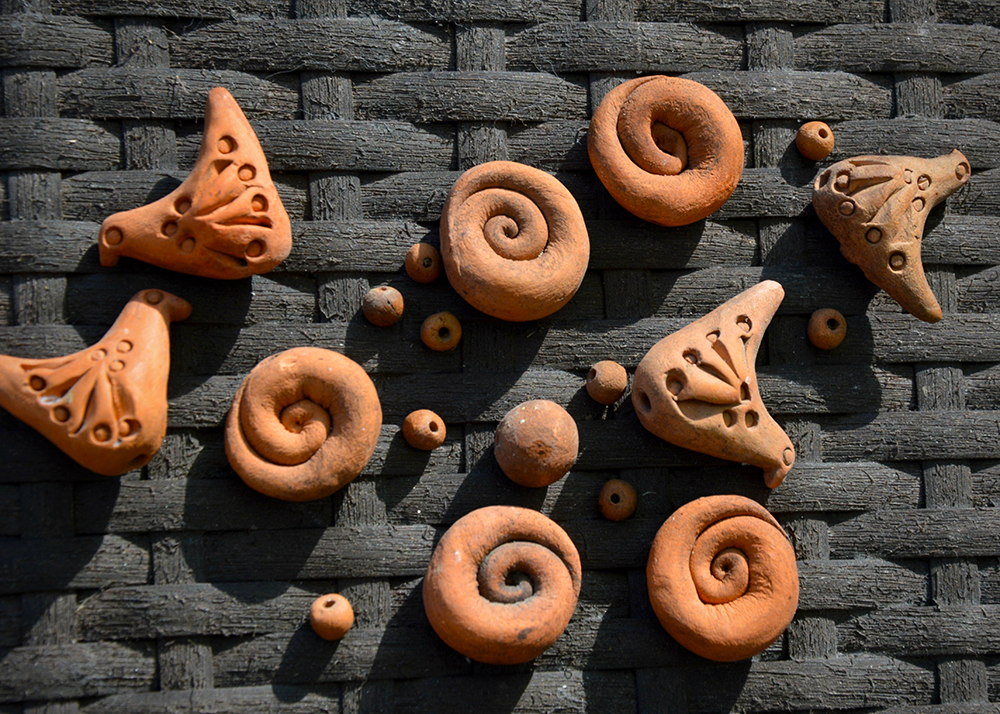
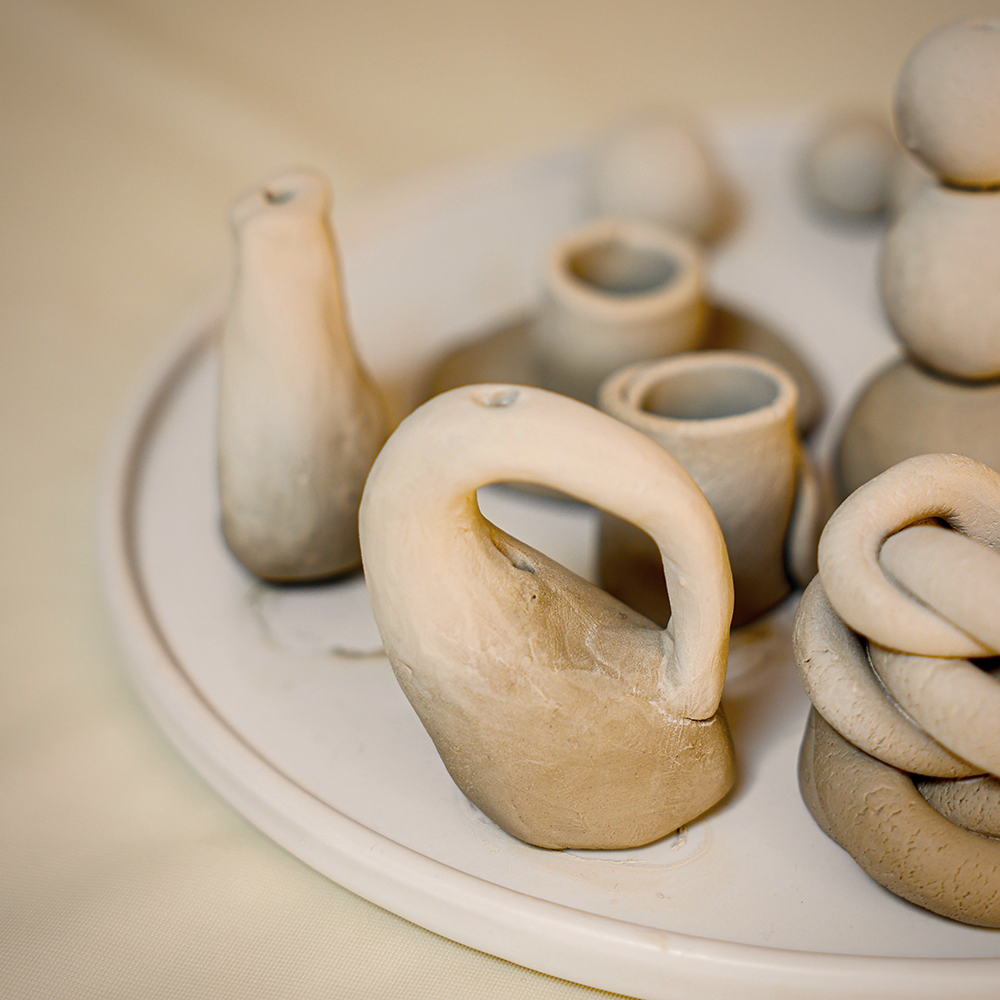
Handbuilding in Ceramics
Handbuilding is a form of pottery that involves creating clay forms without the use of a pottery wheel.
It's a practice that dates back thousands of years and is still widely used today due to its versatility and the unique qualities it brings to ceramic art.
The techniques of handbuilding allow for a range of shapes, sizes, and textures to be achieved by manipulating the clay with your hands and simple tools.
It's also an excellent way to experiment with various surface decorations and glazes, making each piece one-of-a-kind.
The Pinch Pot Method: Shaping Clay with Intuition
Pinch pottery is perhaps the most intuitive of the handbuilding techniques.
It involves taking a ball of clay and forming it into a pot by pinching the clay between your fingers and thumb.
This simple technique allows for a high degree of control and is excellent for making smaller items like bowls, cups, or larger pinch pots.
The key to successful pinch pottery is maintaining uniform thickness throughout the clay to prevent weak spots that could lead to cracks or breaks during firing.
Crafting with Coils: The Coil Building Technique
Coil pottery is a method that involves rolling out coils of clay and then stacking them to form clay hand building techniques.
The coils are blended together to create a seamless surface, which can be left as is for a textured look or smoothed out for a more refined finish.
Coil building is versatile and can be used to create both symmetrical and angular shapes.
It's a common handbuilding technique for making larger items like vases or sculptural pieces.
The Foundation of Slab Building Techniques
Slab construction involve rolling out slabs of clay to a desired size and thickness using a rolling pin or a slab roller.
These slabs are then cut and joined to create a variety of forms.
Slab pots, for example, can range from simple cups to complex geometric shapes.
Joining flat slabs requires careful attention to scoring and slipping to ensure a strong bond.
Slab technique is ideal for creating larger, more structured pieces like boxes or furniture components.


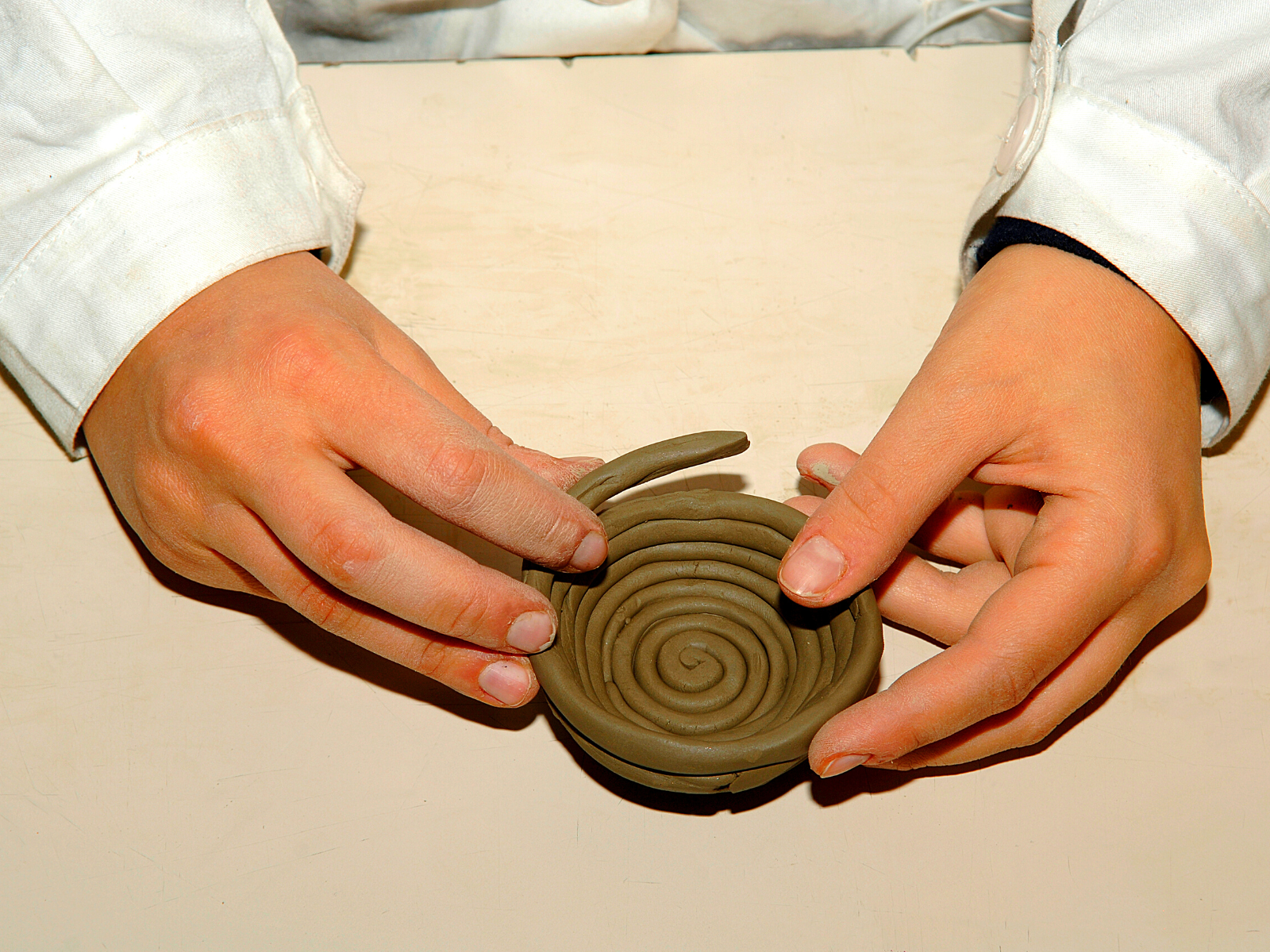
Tools of the Trade for Handbuilding
Handbuilding doesn't require complex machinery; instead, it relies on pottery tools that can be found in most pottery studios.
These include rolling pins for flattening clay, slab rollers for producing slabs of uniform thickness, and pointed tools for scoring the clay.
A banding wheel can be helpful for working on pieces from all angles, and a damp sponge is essential for smoothing surfaces and blending seams.
Of course, your hands are your most valuable tool, and experimenting with different hand gestures can produce a variety of textures and shapes.
The Science Behind Clay: Understanding the Material
To truly master handbuilding, one must understand the material at its most fundamental level: the clay particles themselves.
Let's discuss the nature of earthenware clay, a commonly used material in handbuilding.
This type of clay is known for its plasticity and ability to retain moisture, which is crucial when shaping pieces by hand.
The plastic clay contains fine clay particles that slide over each other, allowing for the malleability needed in techniques like the pinching technique and slab construction.
Additionally, the process of wedging the clay eliminates air bubbles, ensuring the strength and durability of the finished hand built pottery.
As the clay dries, the clay particles bond together, and the piece becomes more fragile.
This stage requires careful handling to prevent cracks and warping.
Once bone dry, the clay is fired in a kiln, where the heat causes chemical changes that permanently harden the clay.
The choice of clay—be it earthenware clay, stoneware, or porcelain—will determine the firing temperature and the final characteristics of the piece, such as its porosity and color.
Understanding these scientific principles is essential for any potter looking to create durable and aesthetically pleasing hand built pots and other items.
Preparing the Clay: First Step in Handbuilding
Before you begin any handbuilding project, it's crucial to prepare clay properly.
This involves kneading the clay to eliminate air bubbles and ensure an even consistency.
The best clay for handbuilding is typically earthenware or stoneware, as they have the right balance of plasticity and strength.
A damp sponge can be used to smooth the surface of the clay, and simple tools like a needle tool can help in the detailing process.
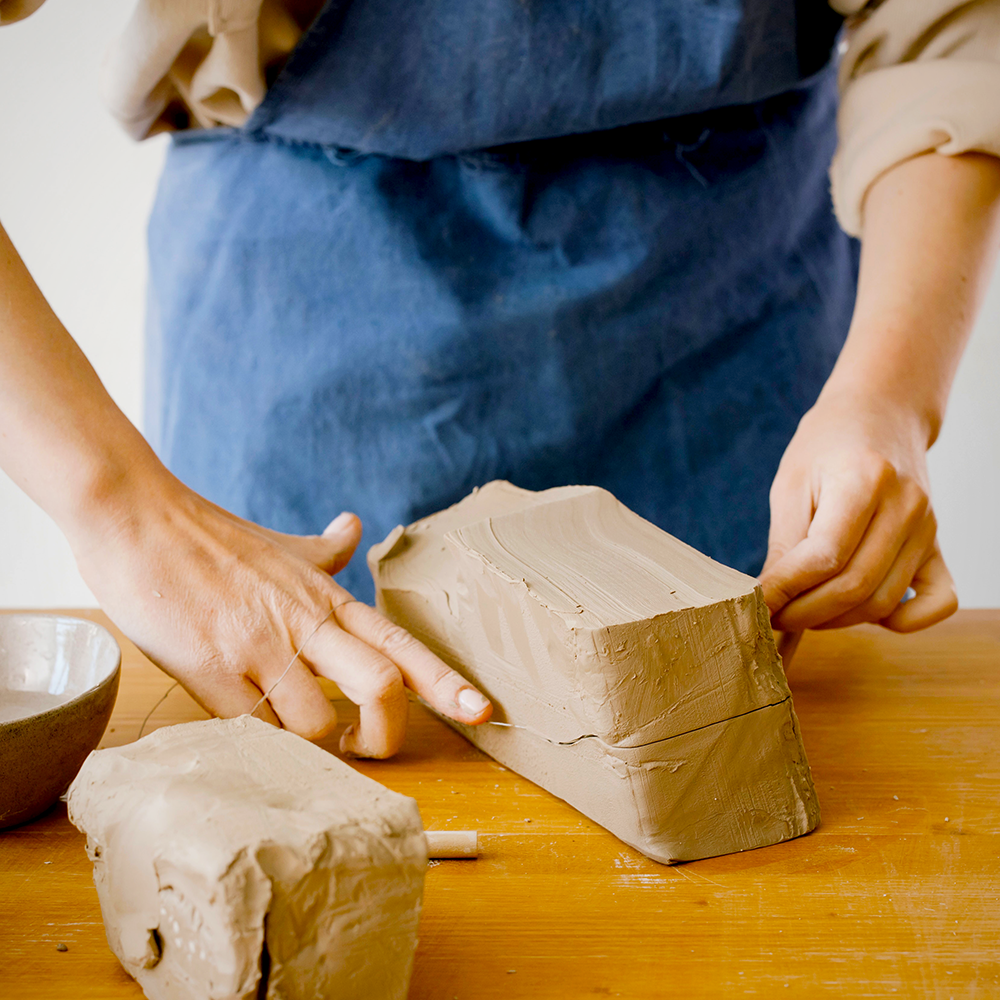
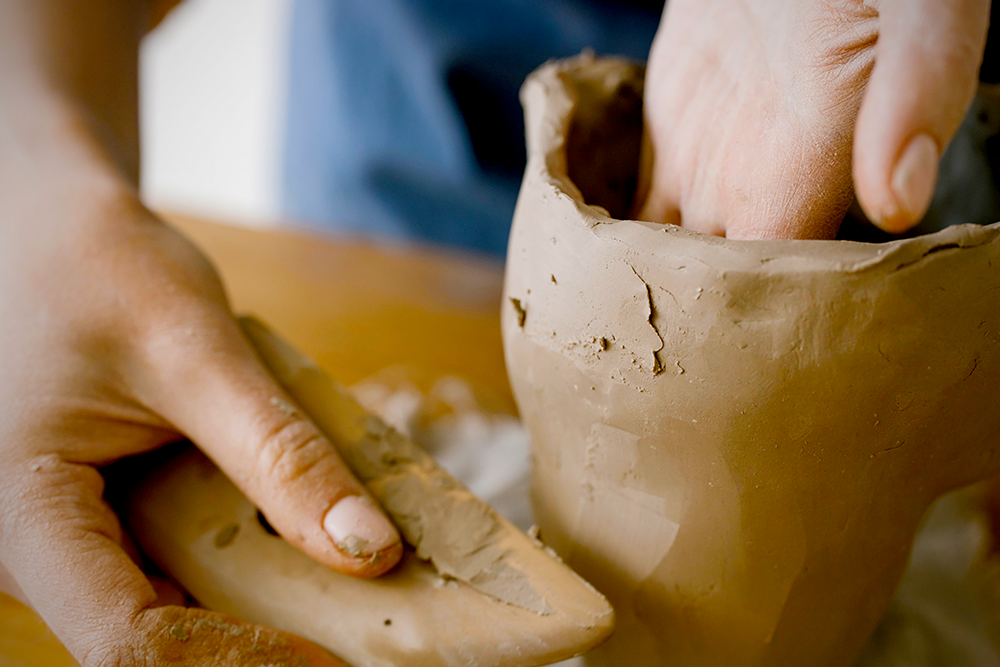
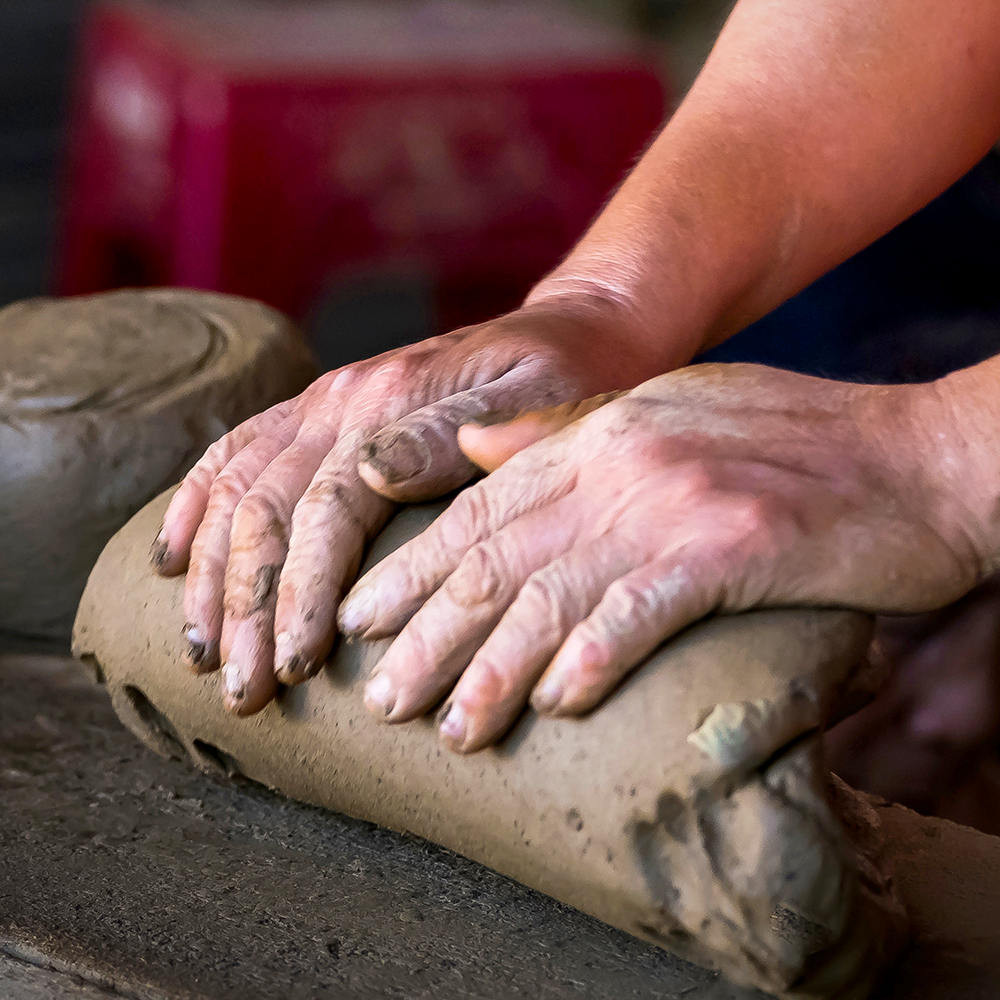
Finishing Touches: Refining Handbuilt Pottery
Once you've formed your clay into the desired shape using handbuilding techniques, the next step is to refine and finish your piece.
This may involve trimming excess clay, smoothing surfaces with a damp sponge, or adding decorative elements.
After the piece is bone dry, it will need to be bisque fired, glazed, and then glaze fired to complete the process.
The final result will be a unique and handcrafted piece of ceramic art that you can proudly display or use in your daily life.
The Evolution of Handbuilding Techniques
Handbuilding, a term that encompasses various techniques used in shaping clay, has evolved significantly over the centuries.
The common handbuilding techniques include the pinch, coil, and slab methods, each with its unique approach to manipulating plastic clay.
In the first paragraph, we delve into the historical context of these methods.
Originating from ancient practices, these techniques have been refined over time, allowing potters to create everything from simple hand built pots to intricate ceramic pieces.
The pinch method, possibly the oldest form of pottery making, involves shaping wet clay with the fingers, while the coil method, another ancient practice, involves adding coils of clay to build up the walls of a pot.
In the second paragraph, we explore the advancements in these techniques.
Modern potters have adapted these age-old methods to suit contemporary designs and functionalities.
For instance, the slab method, which involves rolling out a slab of clay and assembling it into a structure, has been enhanced with the use of tools like the slump mold to create uniform shapes.
This method is particularly useful for making flatware, such as plates or tiles.
Additionally, the use of a potter's wheel is sometimes integrated with handbuilding techniques to refine shapes and create common forms like the coffee mug.
The evolution of handbuilding is a testament to the adaptability and creativity inherent in the craft of pottery.
The Role of Handbuilding in Contemporary Ceramic Art
Handbuilding plays a significant role in contemporary ceramic art, offering artists a way to create unique, one-of-a-kind pieces that reflect their personal style.
From functional ware to avant-garde sculptures, handbuilt pottery is celebrated for its diversity and the direct connection it allows between the artist's hands and the clay.
Moreover, handbuilding offers a sense of freedom and experimentation that is not always achievable with pottery throwing on the wheel.
It's also a more sustainable way to create pottery, as it requires less energy and resources compared to using a pottery wheel.
As such, handbuilding continues to be embraced by artists worldwide and serves as a bridge between traditional techniques and modern ceramic art.
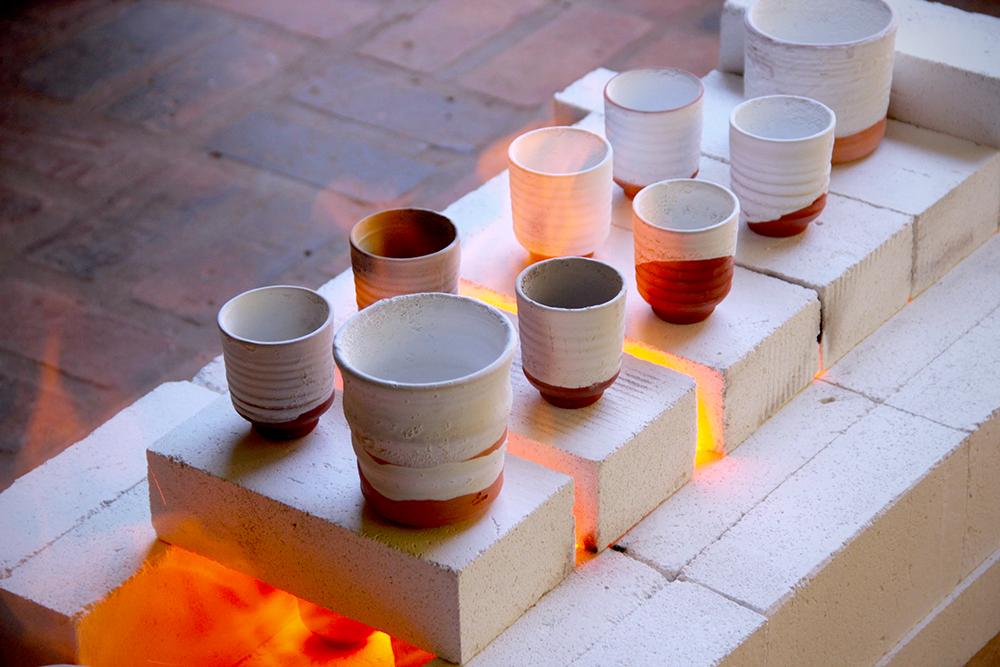


Aesthetics of Handbuilding: Craft Unique Pieces
Handbuilding in ceramics allows for a unique aesthetic unattainable through other methods like the potter's wheel.
The tactile nature of handbuilding techniques such as pinch pots, coil pots, and slab construction contributes to the individuality of each ceramic piece.
Unlike wheel-thrown pottery, which often has a symmetrical and uniform appearance, handbuilt items carry the mark of their maker's hands, making each piece a distinct work of art.
The slight imperfections and variations in shape and texture are not flaws but rather a testament to the authenticity and craftsmanship of the artist.
The visual appeal of handbuilt ceramics is further enhanced by the ability to incorporate additional elements into the design.
Artists can press textures into the clay slab, create intricate patterns with a pointed tool, or merge different clay bodies for a marbled effect.
These techniques allow for a broad range of artistic expression, from rustic and earthy to sleek and modern.
The aesthetic versatility of handbuilding ensures that each slab pot, coil pot, or other handbuilt form can be tailored to the artist's vision, making each piece a unique expression of creativity.
Structural Integrity of Handbuilt Pottery
Understanding the structural integrity of handbuilt pottery is crucial for both the durability and functionality of the ceramic piece.
When constructing a slab pot or coil pot, it is essential to ensure that the seams where the clay slabs or coils join are well blended and smoothed out.
This not only prevents the pot from cracking during the drying and firing processes but also contributes to the overall strength of the finished piece.
A pointed tool can be used to score the edges before joining them, which helps to create a stronger bond between the pieces of clay.
Moreover, the thickness of the walls of a handbuilt item must be consistent.
Variations in wall thickness can lead to uneven drying, which might cause warping or cracking.
When making pottery by hand, artists must be mindful of the balance between the weight and the size of the piece to maintain its structural integrity.
For example, a large coil pot requires a substantial base to support its walls, while a delicate slab-built form might need a lighter touch to preserve its fine edges.
By paying close attention to these details, handbuilders can create ceramic pieces that are not only beautiful but also sturdy and functional.
Versatility: Functional to Sculptural Pieces
Handbuilding pottery is not limited to creating functional items like coffee mugs or plates.
It also opens up a world of possibilities for sculptural pieces.
By combining the three methods—pinch, coil, and slab—artists can create complex forms that would be difficult or impossible to achieve on a potter's wheel.
Handbuilt pottery can range from simple process pieces to intricate, multi-faceted clay sculptures.
Project Ideas: Inspiration for Handbuilding
When it comes to making ceramics, project ideas are limitless.
Handbuilding allows for a wide range of creative expression, from slab built pieces that take advantage of the slab technique's precision to coiled pots that showcase the organic nature of the coiling technique.
Whether you're interested in creating a shallow dish or a towering sculpture, handbuilding offers the flexibility to bring your vision to life.
Experiment with different textures, colors, and shapes to create unique and personalized pieces.
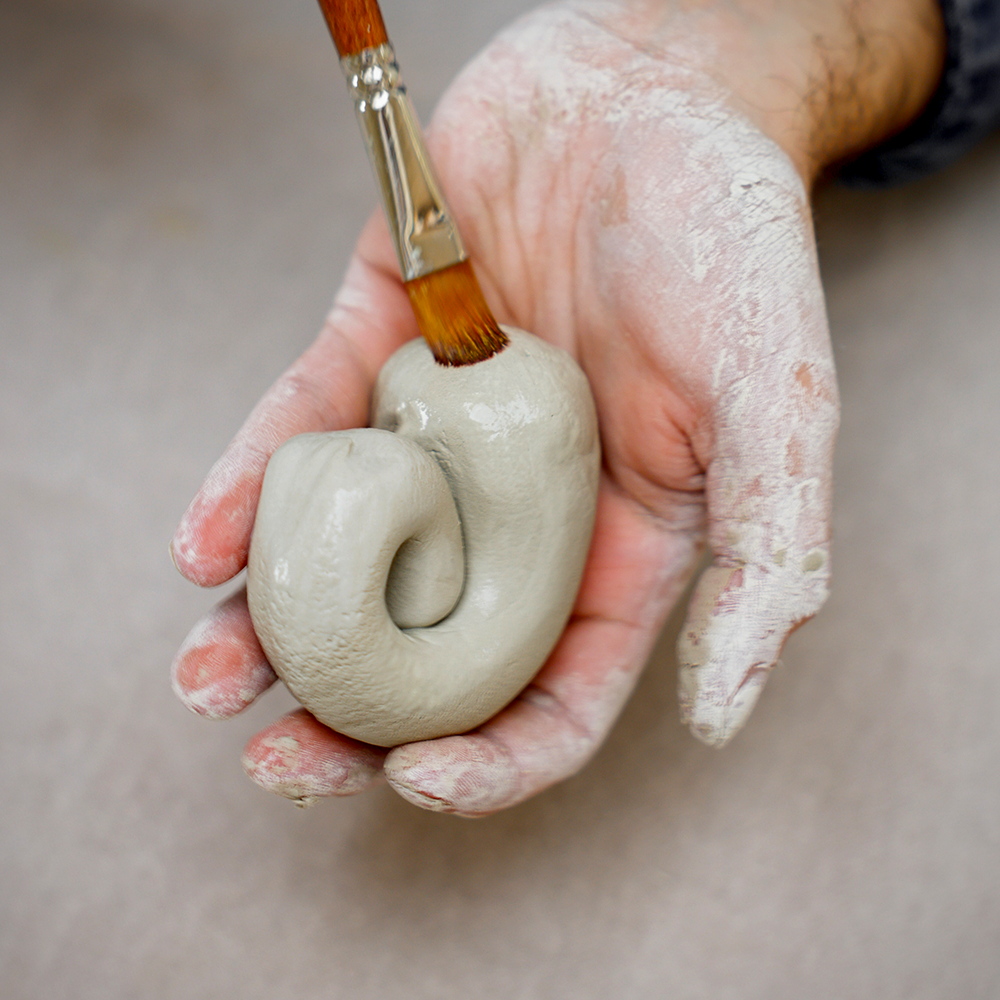
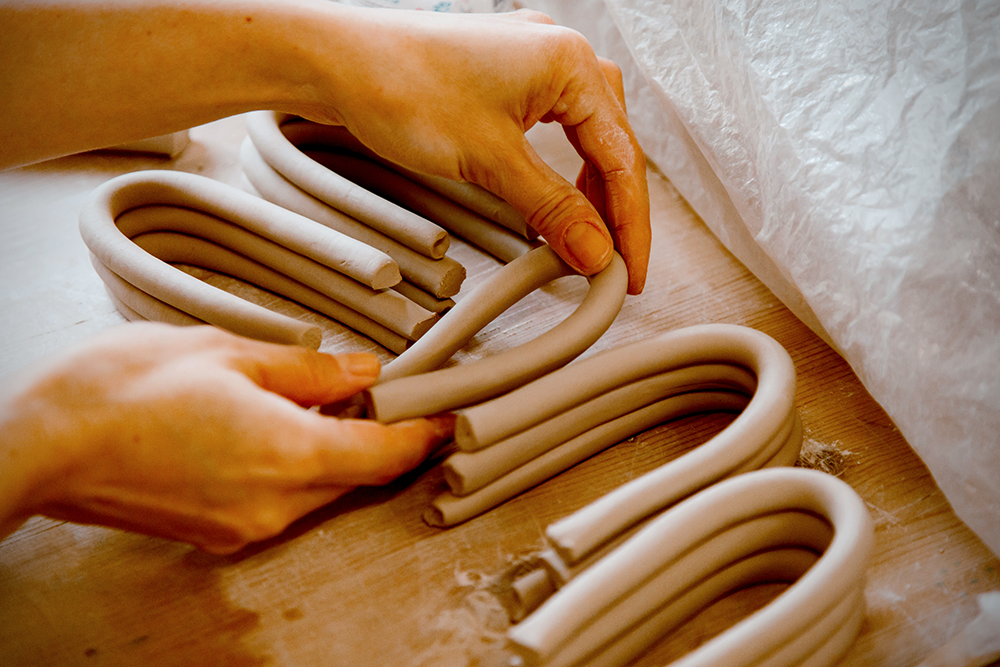

Learning Curve: How to Learn Handbuilding
Learning handbuilding is a simple process that requires patience and practice.
Beginners can start with basic techniques like the pinch pot method and gradually move on to more complex methods like slab building and coil pottery.
There are numerous resources available, including pottery classes, online tutorials, and books on ceramic art, to help you master these techniques.
The Endless Possibilities of Handbuilding
Handbuilding is a versatile and fundamental technique in the world of pottery.
It is a fundamental pottery technique that encompasses three primary methods: pinch, coil, and slab.
Each technique offers unique advantages and can be used to create a wide range of clay forms, from functional items to sculptural artworks.
From its humble origins in ancient civilizations to its modern-day adaptations, it continues to be a beloved method for creating unique and functional ceramic pieces.
With simple tools and a bit of practice, anyone can learn handbuilding and explore the endless creative possibilities it provides.
Whether you're drawn to the precision of pottery or the playful freedom of clay, there's no denying the therapeutic benefits of handbuilding.
By understanding the three types of handbuilding and experimenting with different techniques, you can create one-of-a-kind pieces that reflect your unique style and personality.
So, roll up your sleeves, get your hands dirty, and see where your creativity can take you!
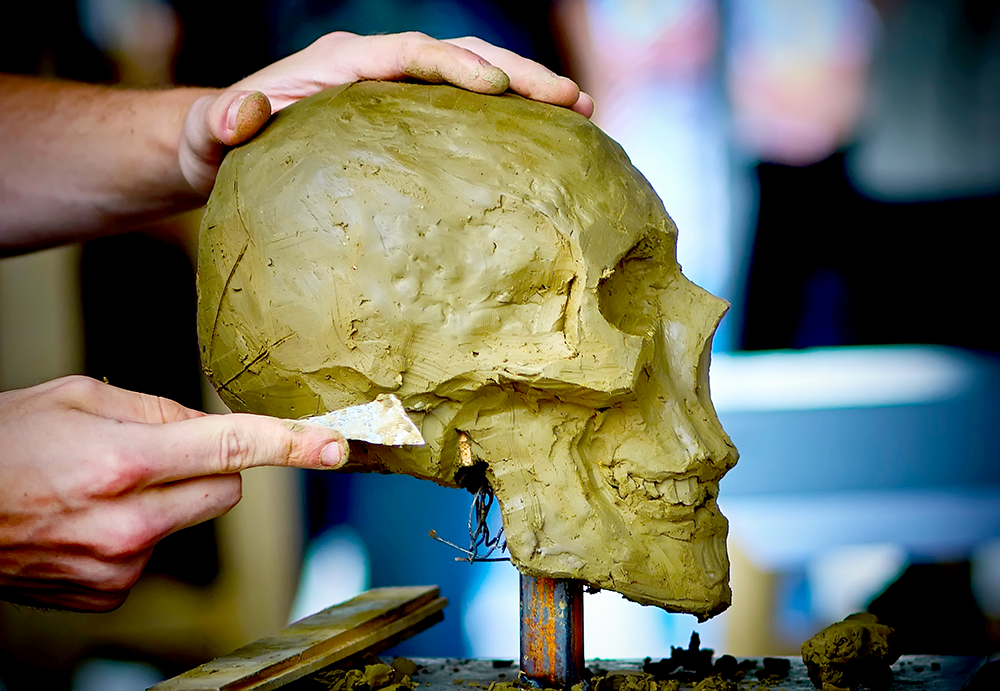

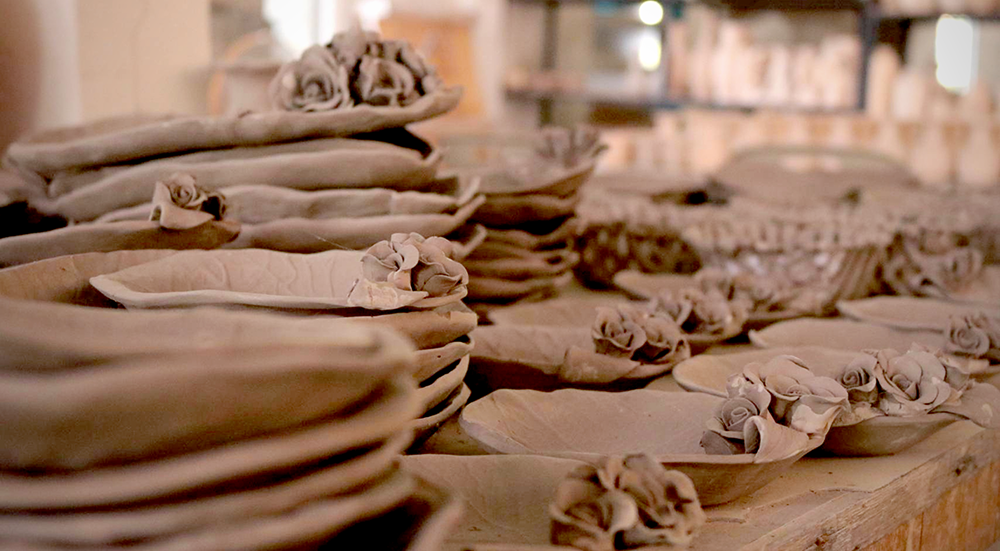
Eager to learn more about these basic handbuilding techniques? Check out Clay Corner Studio's video!
Want even more content about creativity and art?
Be sure to check out all of our creative chronicles!
Love pottery and working with clay?
Check out some of our other ceramic articles:

